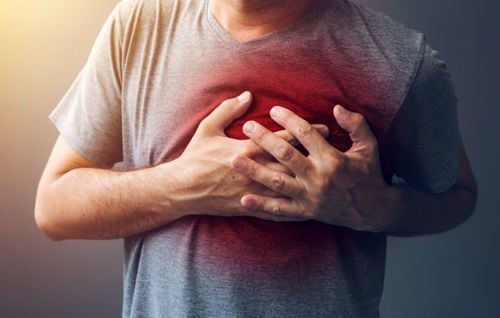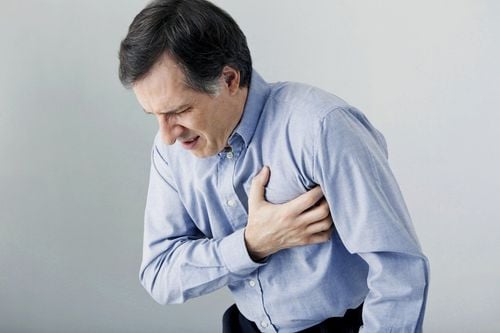This is an automatically translated article.
Posted by Specialist Doctor I Nguyen Cong Hoa - ICU Doctor - Intensive Care Department - Vinmec Times City International General Hospital
Rupture of the diaphragm is a type of injury that loses integrity of the diaphragm that occurs when the patient has an injury to the abdomen, often caused by a work accident or traffic accident. This is a high impact injury that causes abdominal pressure to rise suddenly, the diaphragm is stretched and ruptured.
1. What is the diaphragm? Is diaphragmatic rupture common?
The diaphragm is dome-shaped, separating the abdominal cavity and the chest. They play an important role in respiratory activity, so if an injury occurs, it will weaken the functioning of the respiratory system. The diaphragm is demarcated by negative thoracic pressure and active positive abdominal pressure.
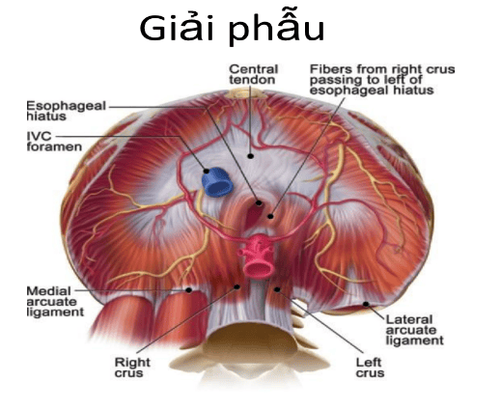
Accordingly, diaphragmatic rupture accounts for 0.8 to 8%, or is often overlooked (7-70%). However, diaphragmatic rupture is difficult to diagnose because of its masked co-ordinating lesion, its discreet and non-specific imaging, so it has received little attention from clinicians.
Diaphragm rupture can be seen in closed abdominal trauma (80-90%) traffic accidents, abdominal wounds, stab wounds, bullets. However, left diaphragmatic rupture is more frequent. When there is trauma, there are often broken ribs, pneumothorax, pulmonary embolism, liver, spleen, and colon damage.
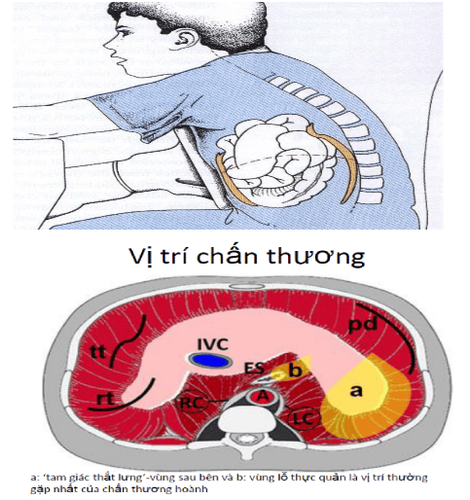
2.How is the severity of diaphragmatic rupture?
According to the American Association of Traumatic Surgeons (AAST), diaphragmatic rupture is divided into 5 degrees.
Level I: contusion Grade II: tear ≤ 2 cm Grade III: tear 2-10 cm Grade IV: tear > 10 cm , tissue loss ≤ 25 cm2 Grade V : tear and tissue loss > 25 cm2 Commonly combined lesions are as follows:
Liver 48%. Hemothorax, pneumothorax 47%. Spleen 35%. Ribs 28%. Intestines 23%. Kidney 16%. Pelvic bones 14%. Aorta 4%. Spinal cord 4%. What are the complications of diaphragmatic rupture?
Trauma to the diaphragm + Atelectasis 10-68%. Effusion, gas MP 10-23%. Purulent pleurisy 2-10%. Bile leak due to liver injury. Bronchoscopy, esophagus. Chronic diaphragmatic hernia. Diaphragm paralysis. Anemia, intestinal infarction. Accordingly, the 24-hour mortality rate due to diaphragmatic trauma accounts for about 25%. It is mainly due to other thoracic and abdominal trauma associated with or may also be a complication of the above-mentioned diaphragmatic injury.
3.Clinical and subclinical signs of trauma to the diaphragm
3.1. Clinical signs Accordingly, the clinical signs that need attention are as follows:
For trauma patients, it is necessary to check the chest and abdomen. Detecting bruises, trauma caused by sharp objects or direct open wounds in the thoracic vertebrae 4-12 (D4-D12) can cause direct injury to the diaphragm. The patient has signs of traumatic shock if there are associated lesions. There may be signs of bruising in the abdomen, chest, signs of broken ribs, broken pelvis. Abdominal pain, abdominal distension, vomiting, abdominal wall resistance. Auscultation of RRPN is reduced or absent on the affected side. If a nasogastric tube is placed in the case of gastric hernia on the chest, a gas sound can be heard in the chest when the stomach is inflated. In addition, patients may experience shortness of breath, respiratory failure, cardiac arrhythmia due to herniation of organs, pneumothorax, blood spillage causing compression of the mediastinum, heart, and atelectasis.
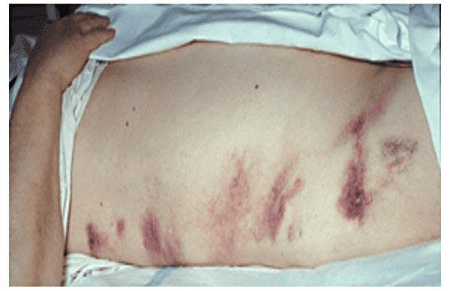
3.2. Subclinical signs? X-ray
X-ray: low sensitivity 30-70% (left side); 15-30% (right side). CT scanner has a sensitivity of 70-90%, specificity of 80-100%. Accordingly, chest X-ray will show
The diaphragm is pushed up. There may be pneumothorax, hemothorax. There may be trauma to the ribs. Mediastinal compression. Image of gastrointestinal gas balloon in the chest. Discontinuity of the diaphragm. Abnormal position of gastric tube.
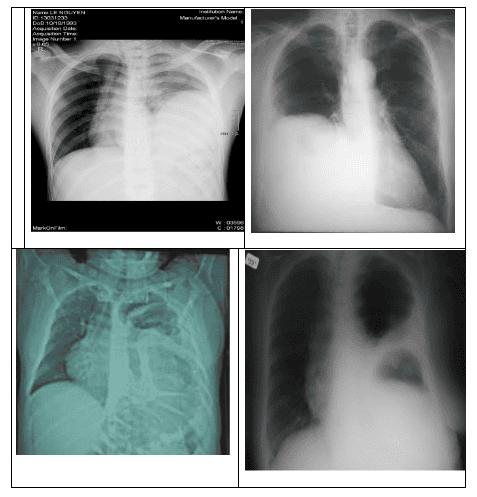
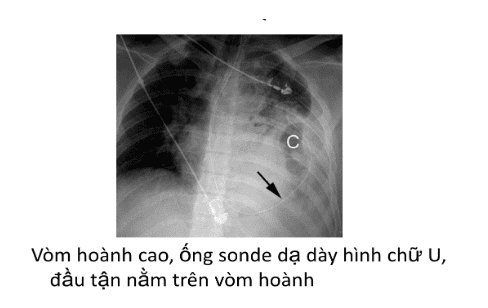
Direct signs:
Diaphragm discontinuity, sensitivity 20-80%, specificity 90-100%. Diaphragm sway, sensitivity 54%, specificity 98%. Without diaphragm, sensitivity 20-80%, specificity 90-100%
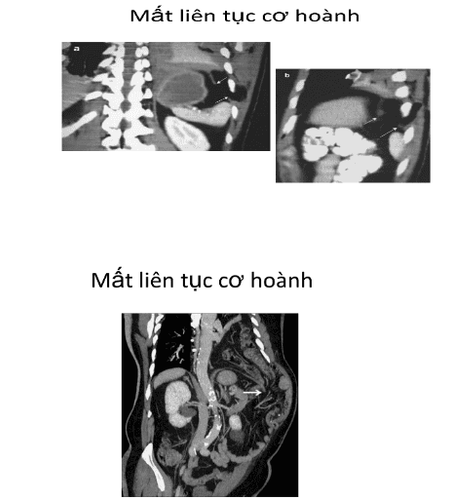
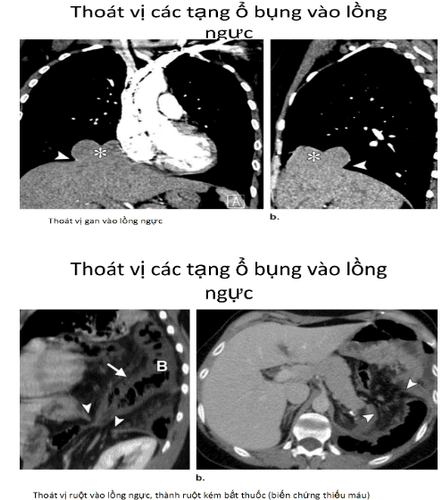
Ultrasound in diaphragmatic trauma
Ultrasound image of diaphragmatic injury will show:
Diaphragm disruption. Hernia around the liver and intestines through the diaphragmatic wound. The diaphragm pushes high. Other signs of combined damage: Hemothorax, pericardium, and intra-abdominal fluid. The broken lines of the liver and spleen. Normal ultrasound image
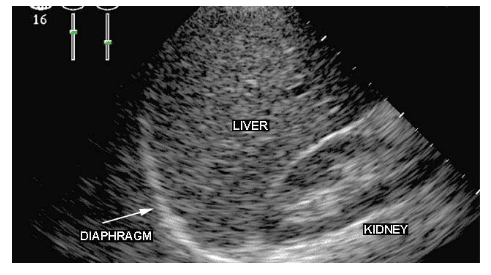
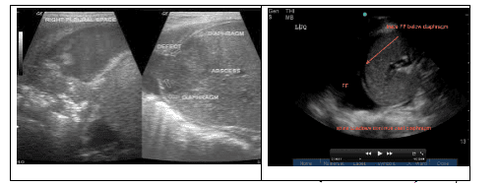
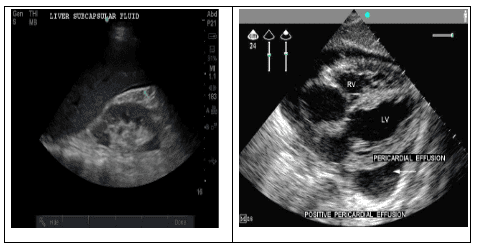
4. How to treat diaphragmatic rupture?
The patient has a ruptured diaphragm which is a major trauma and requires multi-trauma treatment.
4.1. Need general resuscitation Pain relief, anti-shock. Respiratory failure: Intubation. Hemothorax, pneumothorax: pleural drainage. Gastric tube, bladder catheter for monitoring. Blood planning and transfusion: HC, platelets, plasma. Prophylactic antibiotics. 4.2. Patients need surgery Laparotomy midline white line, evaluate bleeding into the abdomen. Examine intra-abdominal and retroperitoneal viscera. Repair hemostasis if there is damage. Explore the left and right diaphragm. Evaluation of diaphragmatic injury. Release the hernia, bring the viscera to the abdomen. Suture the diaphragmatic hole with a removable non-absorbable suture. If the tear is large, it may need to be patched with artificial materials. If there is only a simple diaphragmatic tear, the chest can be opened to suture the tear. Chest and abdomen drainage tubes are required in these cases. Treatment and primary postoperative care in surgical resuscitation. Injury to the diaphragm after chest trauma is very dangerous, can lead to many unpredictable complications. Therefore, it is necessary to be vigilant against the risk of an accident causing chest trauma, and at the same time take the victim to the emergency room for timely intervention.
Vinmec International General Hospital is the address for examination, treatment and prevention of diseases. When performing the examination process at Vinmec, customers will be welcomed and used modern facilities and equipment along with perfect medical services under the guidance and advice of experts. Good doctors, well-trained both at home and abroad.
Please dial HOTLINE for more information or register for an appointment HERE. Download MyVinmec app to make appointments faster and to manage your bookings easily.





